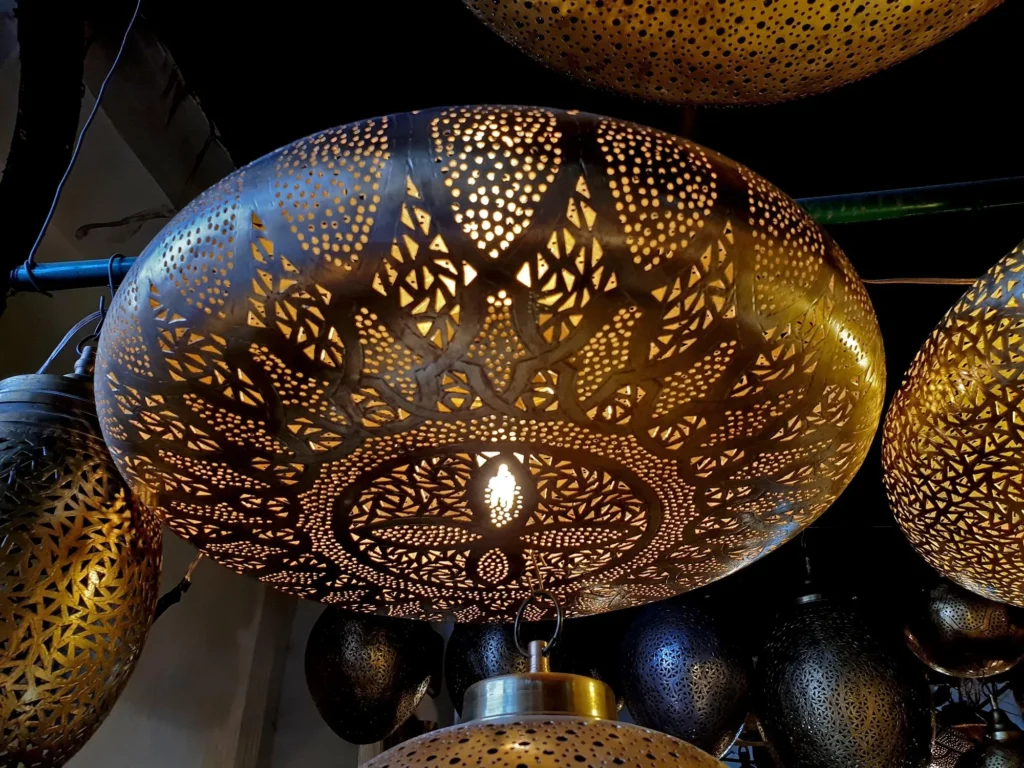Luxury Moroccan Pendant Light accessories are a tribute to the splendors of the golden age of Moroccan art. Traditional and contemporary designs are married to produce luxury Moroccan lanterns, wall scones, pendants and lamps. These masterpieces are carefully designed by talented lighting designers. And handcrafted from high quality metals by Master Craftsmen in Moroccan Lamp cooperatives.
Whether the work is done on brass, bronze or even a Nickel Silver alloy. Morocco’s highly creative artisans use these metals to create superb designs rich with Arabic geometries, floral shapes and calligraphy. The elegant proportions and the efficient use of light. Coupled with the nobility of materials and a jeweler’s meticulous precision. Are a few of the many qualities that characterize Moroccan Pendant Lamps accessories.
The work is intricate and can take weeks, if not months of dedicated labor to be completed. Hammering and chiseling the metal with the delicate patterns that start their life on paper. It is not something that can be rushed because perfection such as this cannot be mass produced to order.
The creation of a Luxury Moroccan Lantern goes through six major phases and each phase is assigned to a person that we refer to as “The Maalam” (The Master):
- The Drawing Phase: A drawing artist draws the motifs and patterns on paper. And then proceeds by carbon copying the design onto the metal slate. He also shades the spots to be drilled in order to facilitate the next Master’s work.
- The Hand Puncturing Phase: This is where the metal slate gets transferred to the Puncturing Master who will proceed by drilling the shaded areas marked by the drawing artist. They use a special thin needle to do this. Which they need to replace almost every half an hour because it gets dull.
- The Engraving and Embellishment Phase: After the slate has been drilled. It goes to the Engraving Master who will use a chisel tool to embellish the complex design patterns by engraving leaves, flower stems etc…
- The Molding Phase: The embellish slate then gets mold into the desire shape, and this is done by yet another Artisan.
- The Welding Phase: After the slate is molded, an artisan uses Aged Bronze to weld it. Bronze is used for welding because it hides the discontinuities. And it makes the Moroccan lantern look more uniform at the welding junction.
- The Polishing phase: This is the last phase that gives the Moroccan lantern its shining luster.

